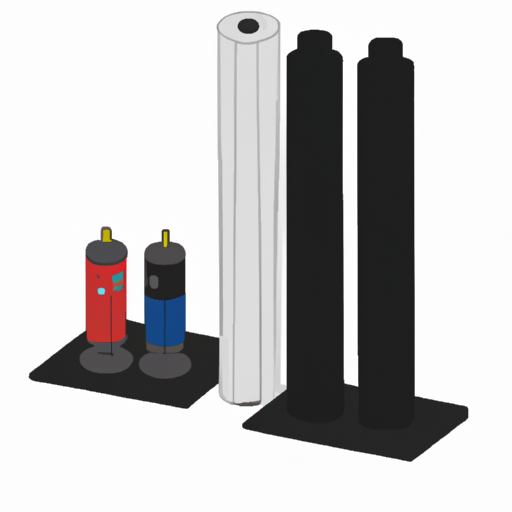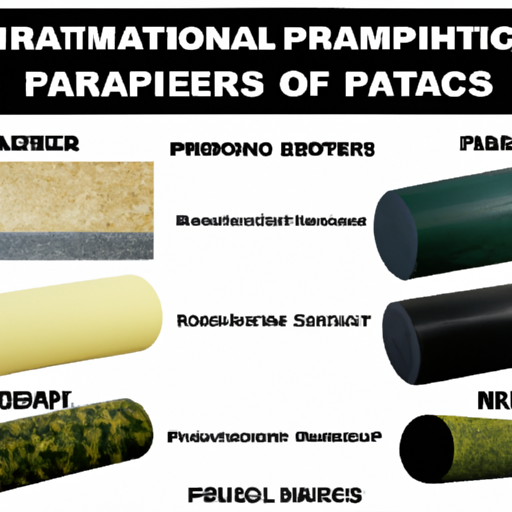This blog post delves into understanding ballistic protection materials, providing an in-depth analysis of different types of protective materials used in ballistic protection. Their properties, manufacturing processes, and application areas are also discussed. The objective is to shed light on the science behind these materials, helping the reader appreciate their role in providing safety and security.
What are Ballistic Protection Materials?
Ballistic protection materials are specialized materials designed to provide protection against ballistic threats such as bullets, shrapnel, or explosive fragments. These materials are crucial in various industries, including law enforcement, military, security, and even civilian applications. They are engineered to absorb and dissipate the energy generated upon impact, reducing the risk of injury or damage to the wearer. Ballistic protection materials come in various forms, including body armor, vehicle armor, and building materials, each tailored to specific needs and threat levels.
These materials are typically composed of multiple layers of different materials, strategically combined to enhance their protective properties. Common materials used in ballistic protection include aramid fibers, such as Kevlar, ultra-high-molecular-weight polyethylene (UHMWPE), ceramics, and metals like steel or titanium. Each material offers unique advantages in terms of weight, flexibility, and resistance to different types of threats. The combination of these materials in ballistic protection products ensures optimal performance and protection for the end-user.
Ballistic protection materials undergo rigorous testing and certification processes to ensure their effectiveness and reliability. Standardized testing methods, such as those set by the National Institute of Justice (NIJ) in the United States, assess the ballistic resistance of materials based on criteria such as velocity, caliber, and impact angle. Understanding the capabilities and limitations of different ballistic protection materials is essential for selecting the right solution to effectively mitigate specific threats.

An image depicting various types of ballistic protection materials.
How are Ballistic Protection Materials Made? – A Glimpse into the Manufacturing Process
Ballistic protection materials are crafted through a meticulous manufacturing process that involves precision and expertise. The production of these materials typically begins with the selection of high-performance raw materials, such as aramid fibers, UHMWPE, ceramics, or metals, based on the desired characteristics of the final product. These raw materials undergo specialized treatments and processes to enhance their strength, durability, and ballistic resistance.
The manufacturing process often involves weaving or layering the selected materials to create a composite structure that maximizes protection while maintaining flexibility and comfort. Advanced technologies such as weaving machines, presses, and cutting equipment are utilized to ensure uniformity and consistency in the material's composition. Each layer is strategically designed to absorb and disperse the energy of a ballistic impact, preventing penetration and reducing trauma to the wearer.
After the material is assembled, it undergoes rigorous testing to evaluate its ballistic performance and compliance with industry standards. Quality control measures are implemented throughout the manufacturing process to verify the integrity and effectiveness of the ballistic protection material. Any deviations or defects are carefully addressed to maintain the high level of protection expected from these specialized materials.
"Is there a One-Size-Fits-All Solution in Ballistic Protection Materials?" – Exploring the Variety
"Is there a One-Size-Fits-All Solution in Ballistic Protection Materials?" – Exploring the Variety:
The diverse nature of ballistic threats necessitates a range of specialized materials tailored to specific needs and scenarios. Different levels of protection are required for various applications, from military combat to law enforcement operations and civilian safety. Manufacturers offer a wide selection of ballistic protection materials, each designed to address unique ballistic hazards and performance requirements.
Aramid fibers, such as Kevlar, are widely used for their high strength-to-weight ratio and flexibility, making them ideal for body armor applications. Ultra-high-molecular-weight polyethylene (UHMWPE) materials offer lightweight and durable protection, suitable for ballistic helmets and vehicle armor. Ceramic materials provide excellent hardness and fracture resistance, often used in armor plates for enhanced ballistic protection.
The variety of ballistic protection materials available allows for customization based on factors such as threat level, comfort, weight, and cost. Manufacturers continue to innovate and develop new materials to improve the performance and versatility of ballistic protection solutions. With advancements in material science and technology, the industry is constantly evolving to meet the evolving challenges of ballistic threats.

A comparative image showing the variety of ballistic protection materials, including their pros and cons.
The Future of Ballistic Protection Materials: What's Next?
The Future of Ballistic Protection Materials: What's Next?
As technology advances and new threats emerge, the future of ballistic protection materials holds exciting possibilities. Research and development efforts are focused on enhancing the performance of existing materials and exploring innovative solutions to address evolving ballistic challenges. Nanotechnology is one area of interest, with the potential to improve the strength and durability of ballistic fibers while reducing weight and thickness.
Furthermore, the integration of smart materials and wearable technologies into ballistic protection systems is being explored to enhance situational awareness and communication capabilities for users. Adaptive materials that can respond to changing ballistic threats in real-time are also a promising avenue for future development. Additionally, sustainability and environmental impact are becoming increasingly important considerations in the design and production of ballistic protection materials.
In conclusion, the world of ballistic protection materials is vast and fascinating. Understanding these materials, their properties, and their manufacturing processes is essential to appreciate the level of protection they provide. Despite the challenges in their production, these materials play a crucial role in personal safety and national security. The future holds promising advancements in this field, with a focus on lighter, more durable, and more efficient protection materials.
אין באמור להוות משום המלצה או ייעוץ מקצועי – לפני ביצוע כל פעולה יש להתייעץ באופן פרסונלי ופרטני עם מומחה מוסמך



